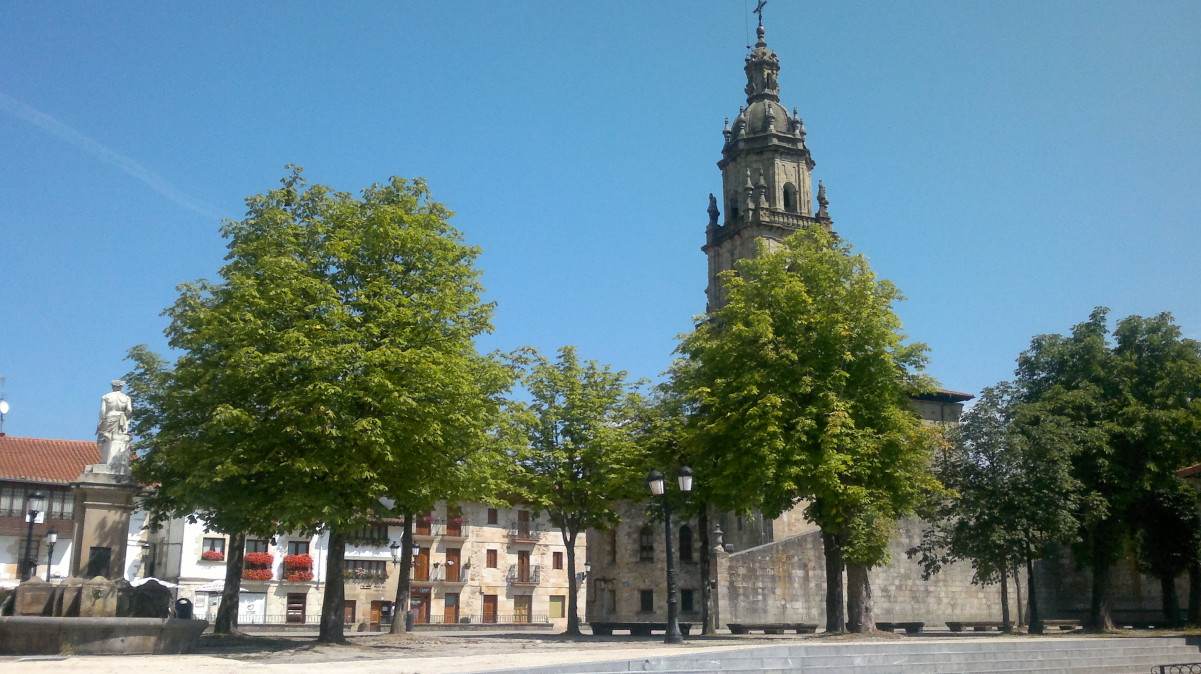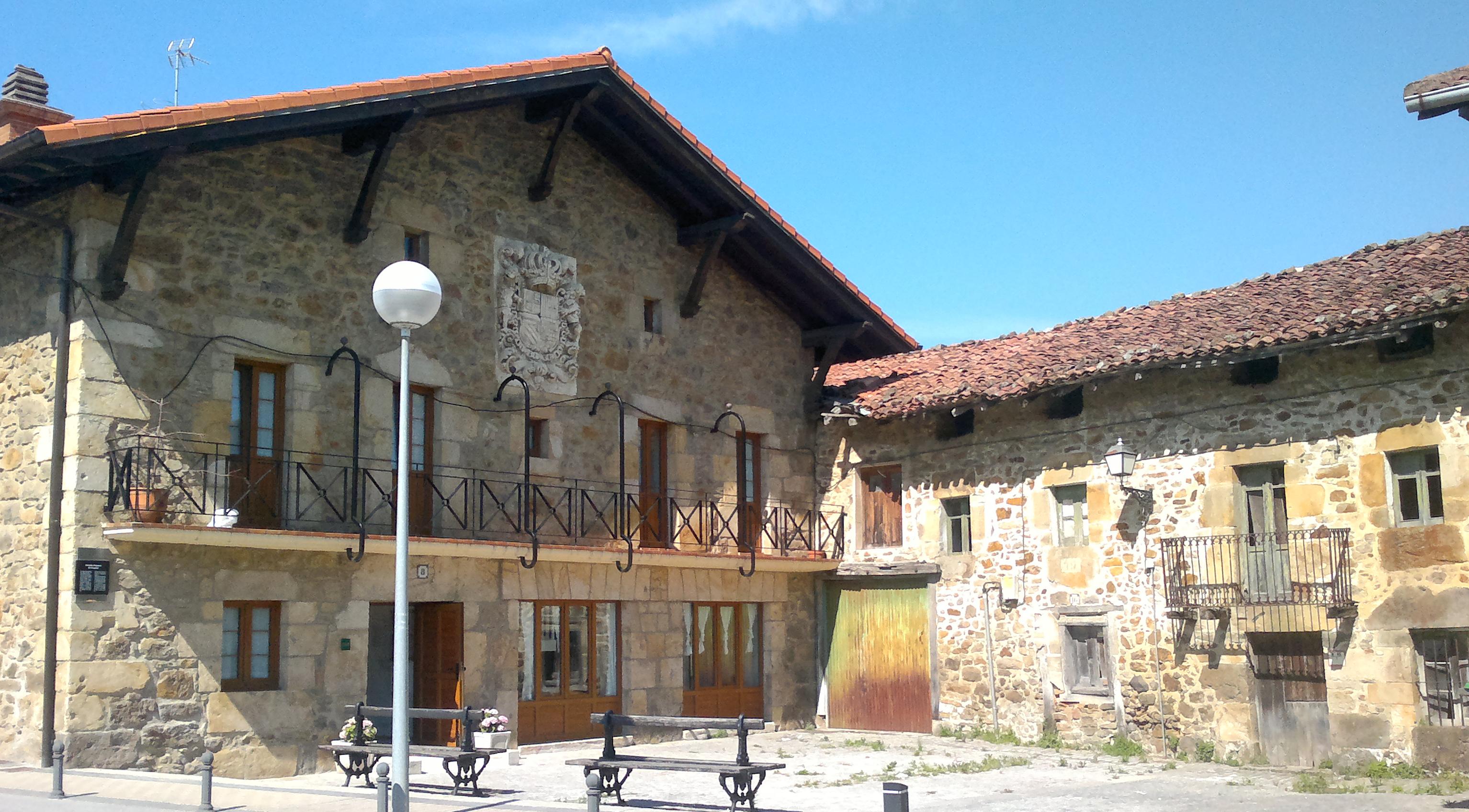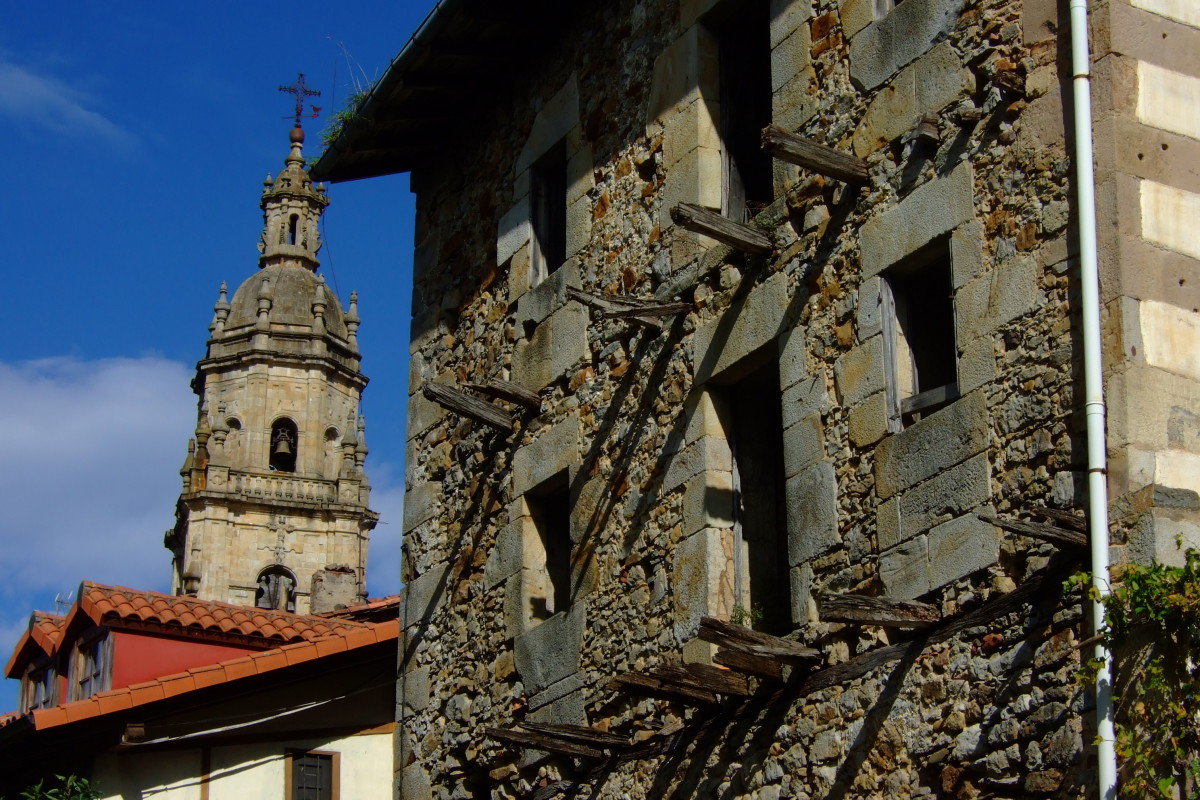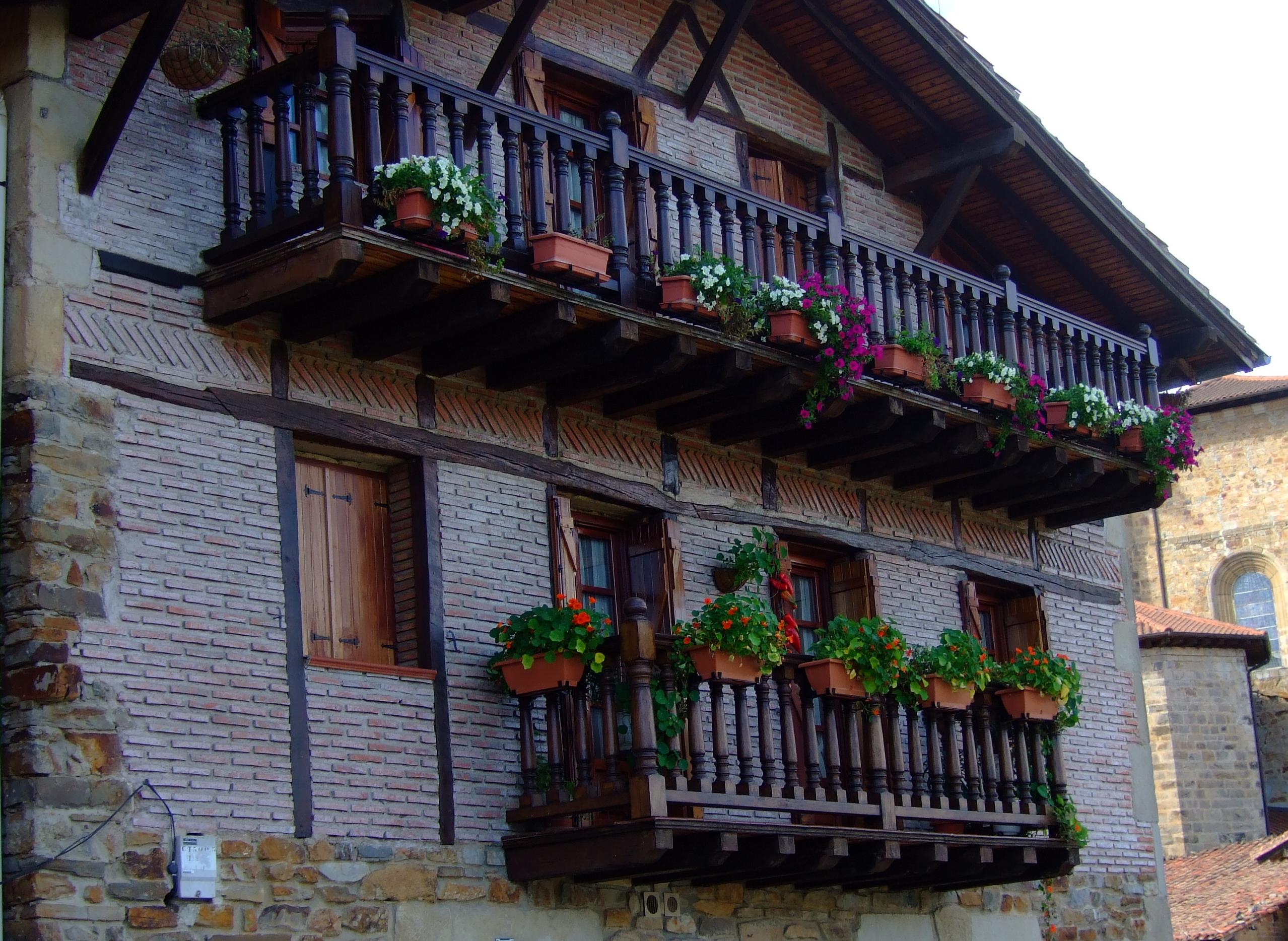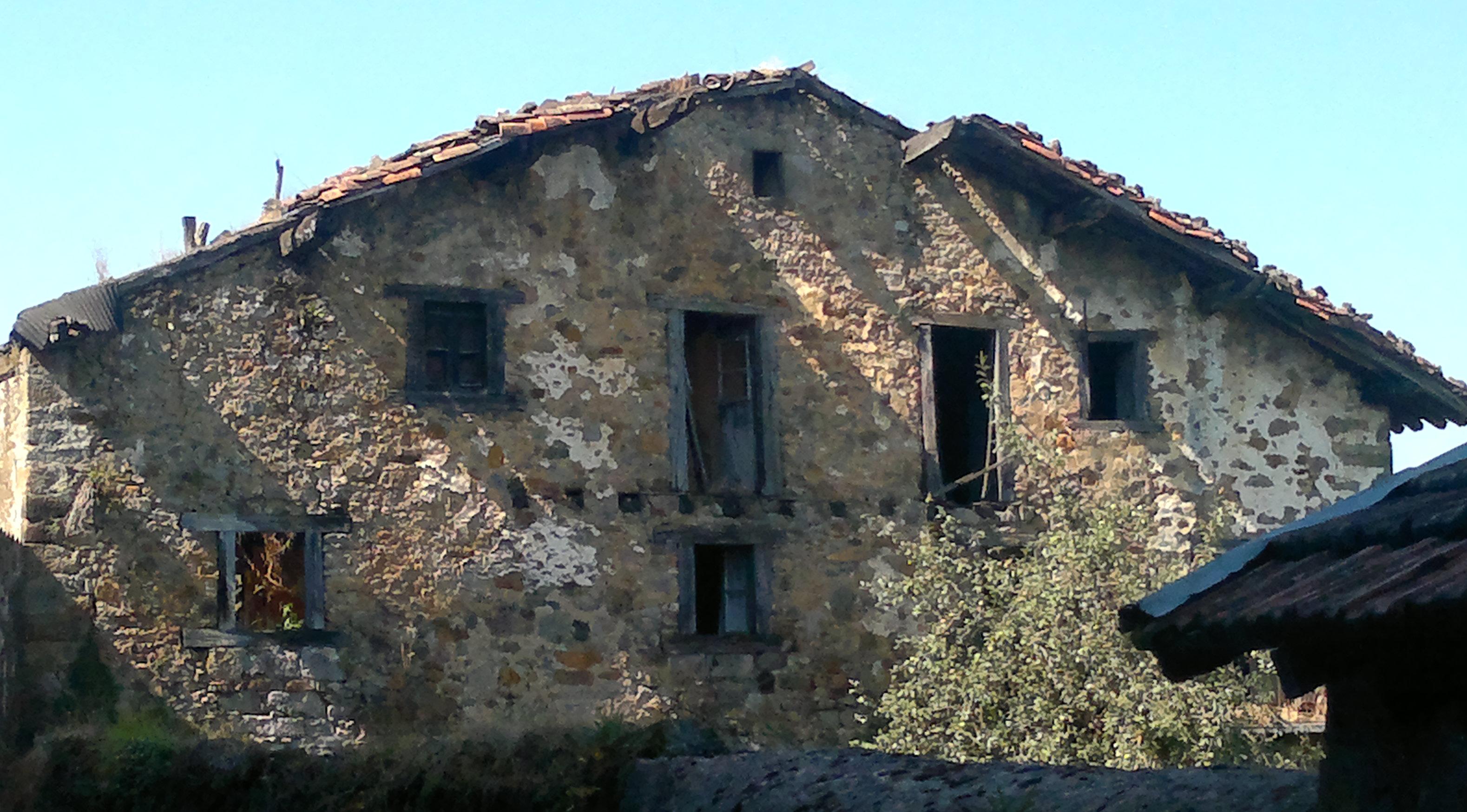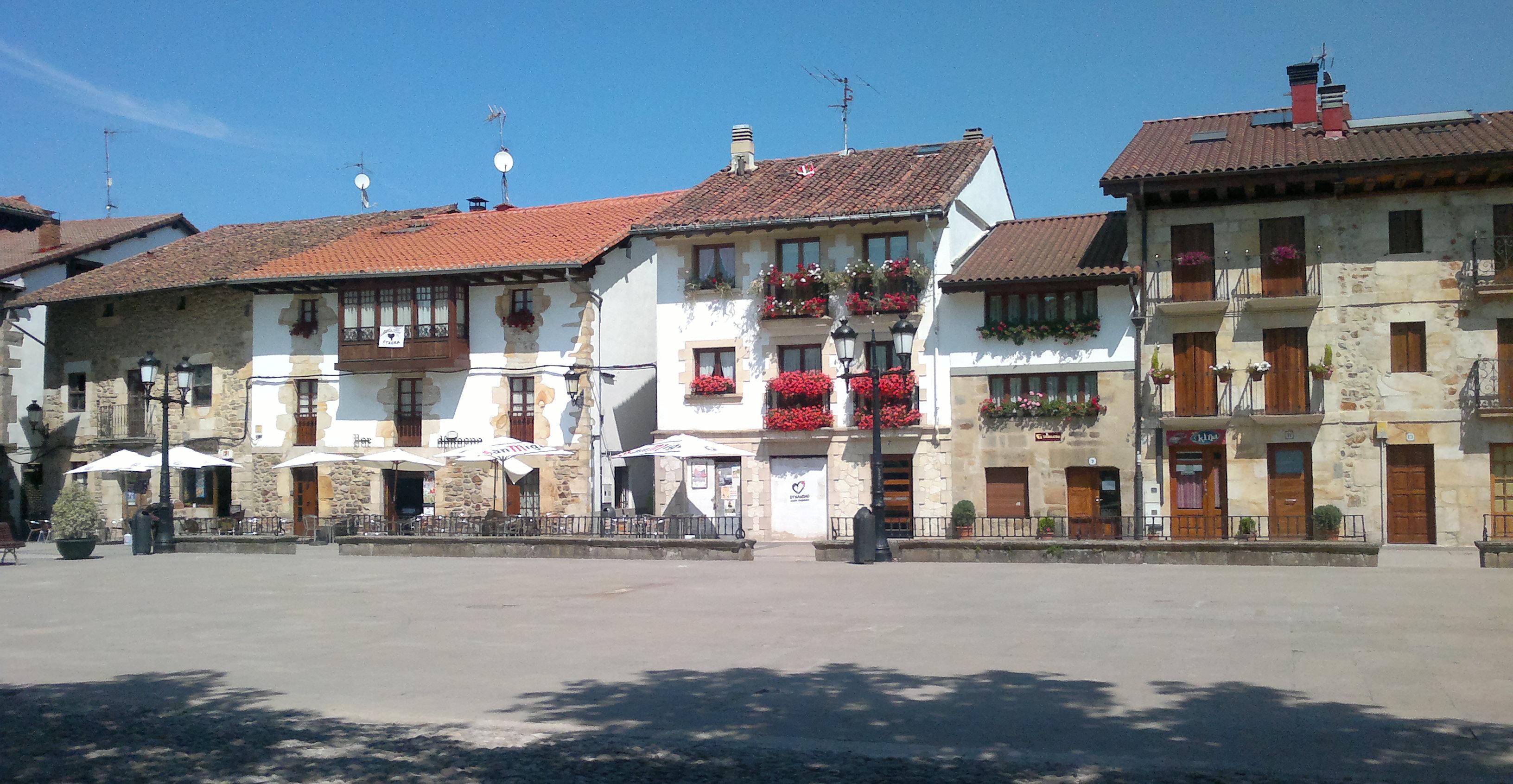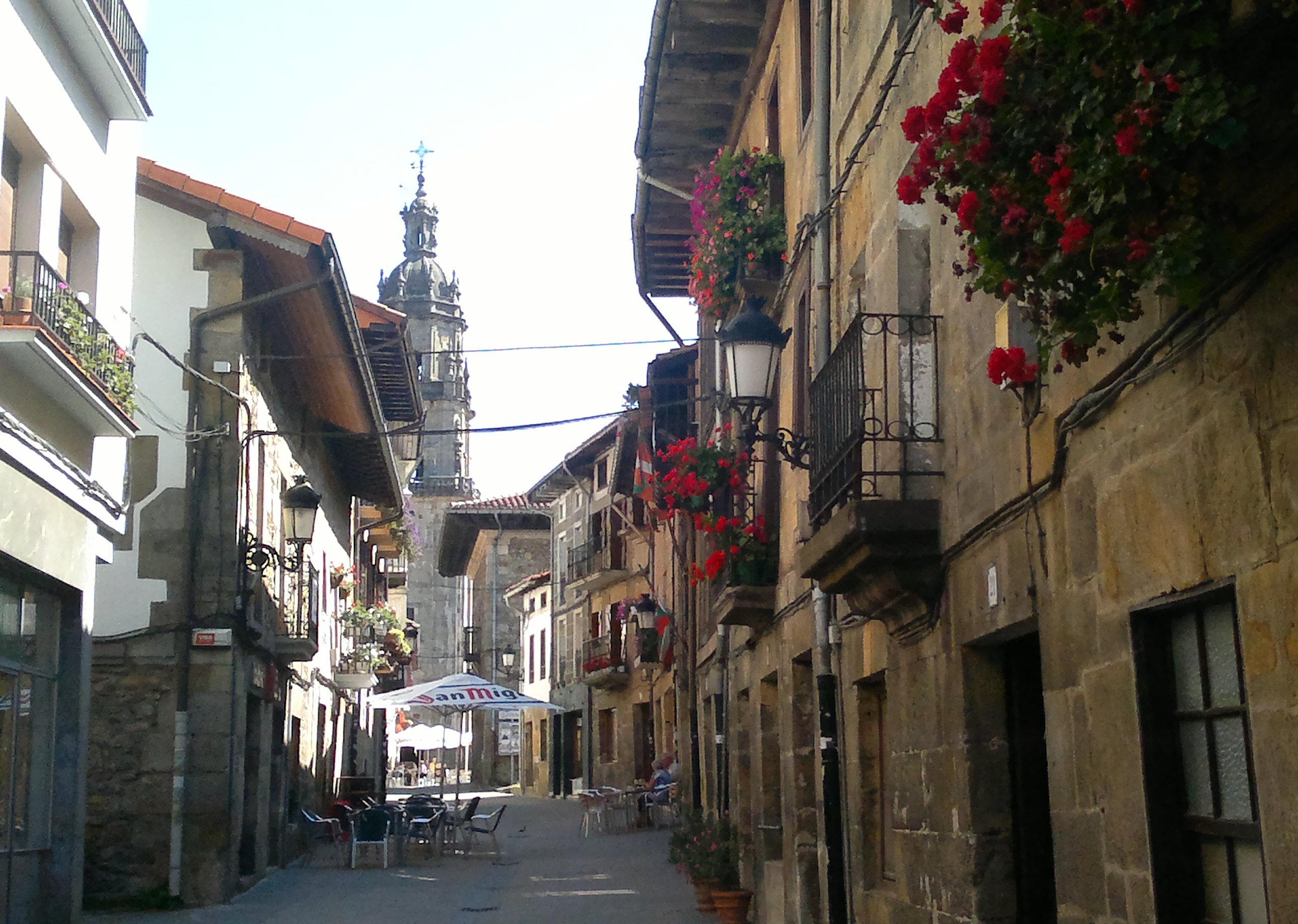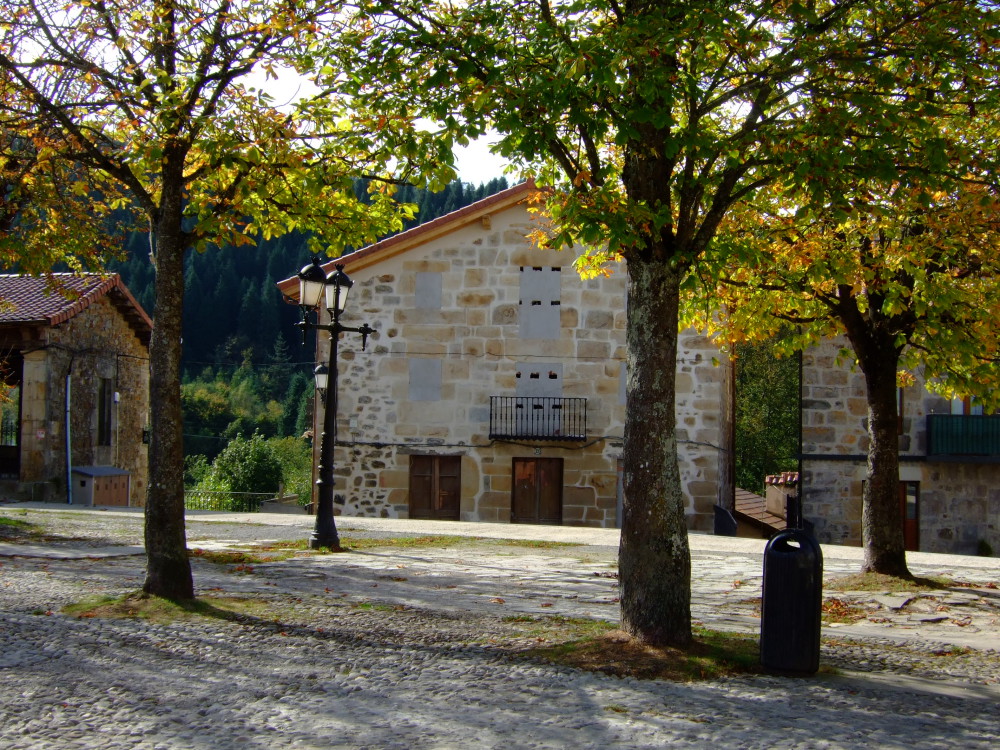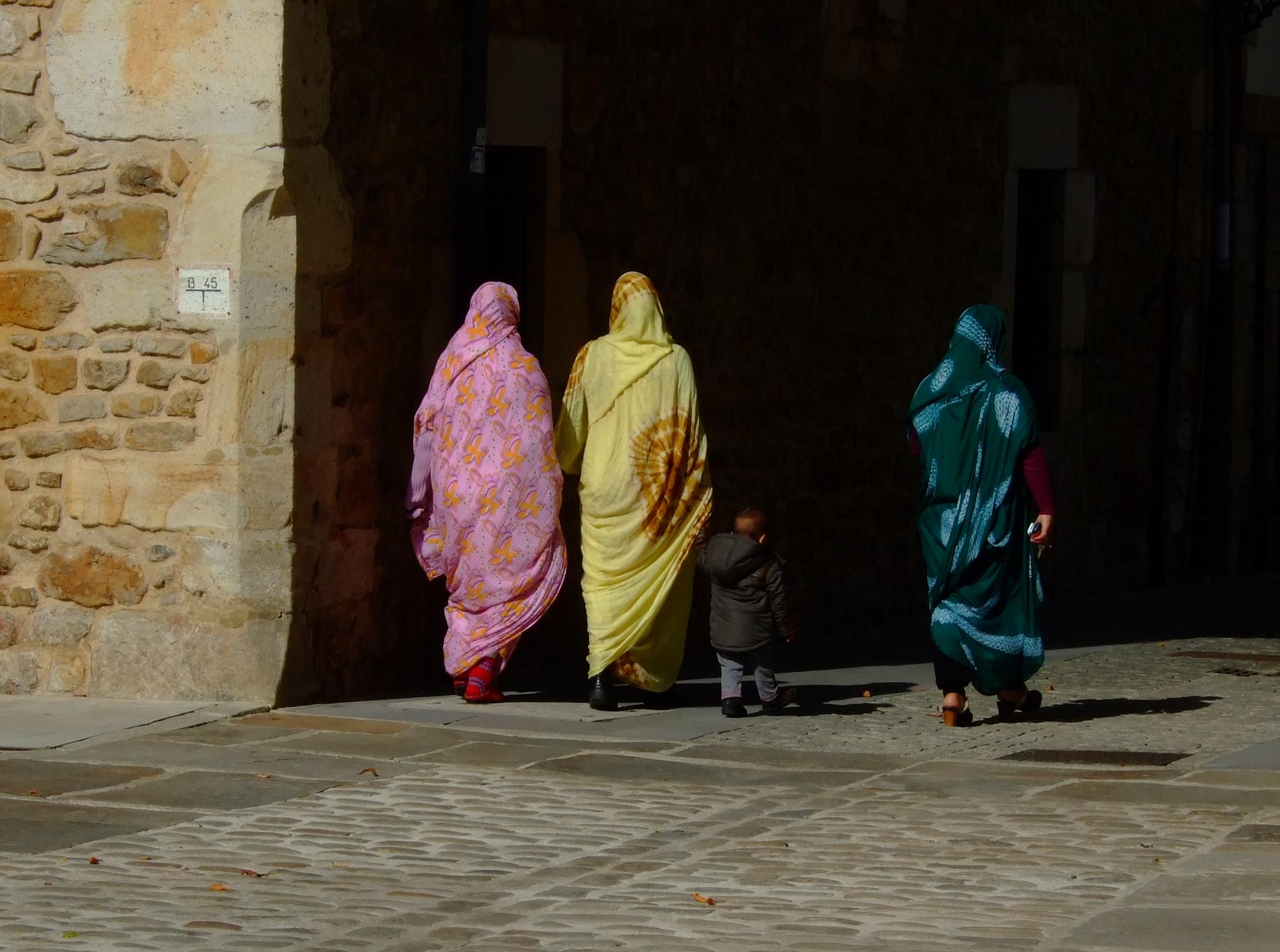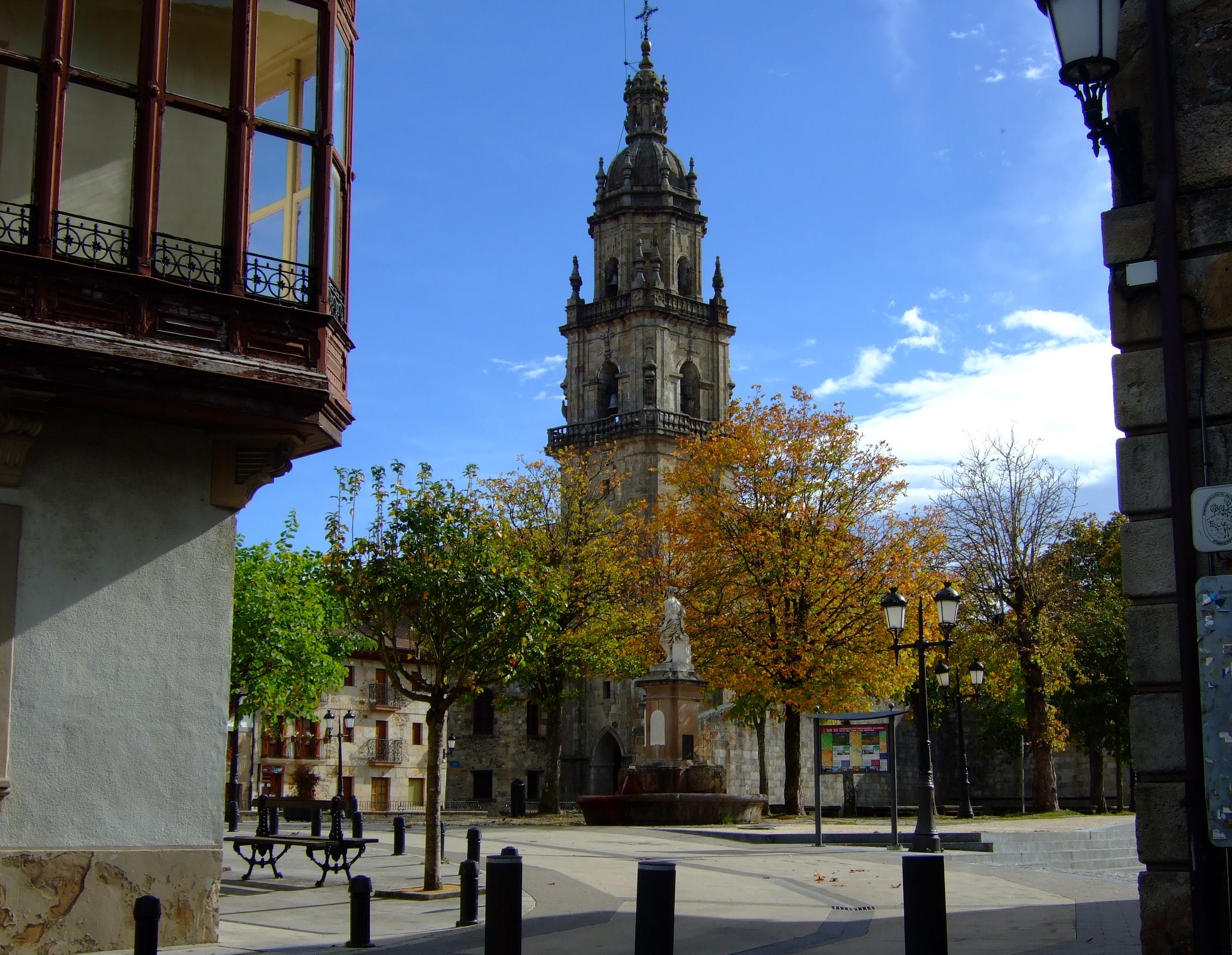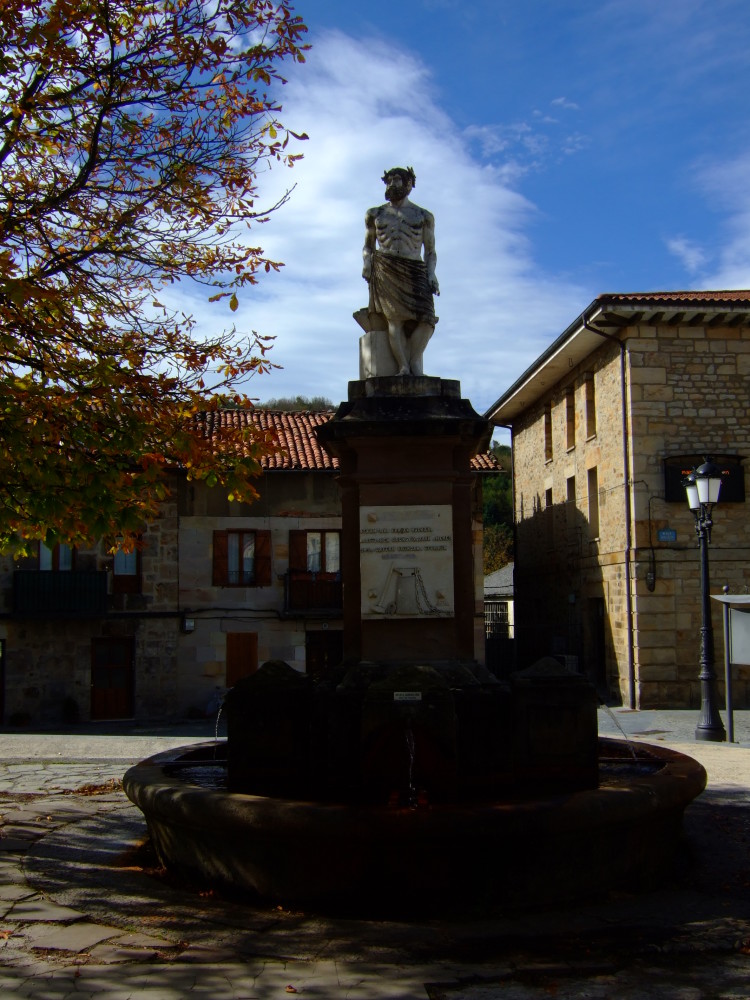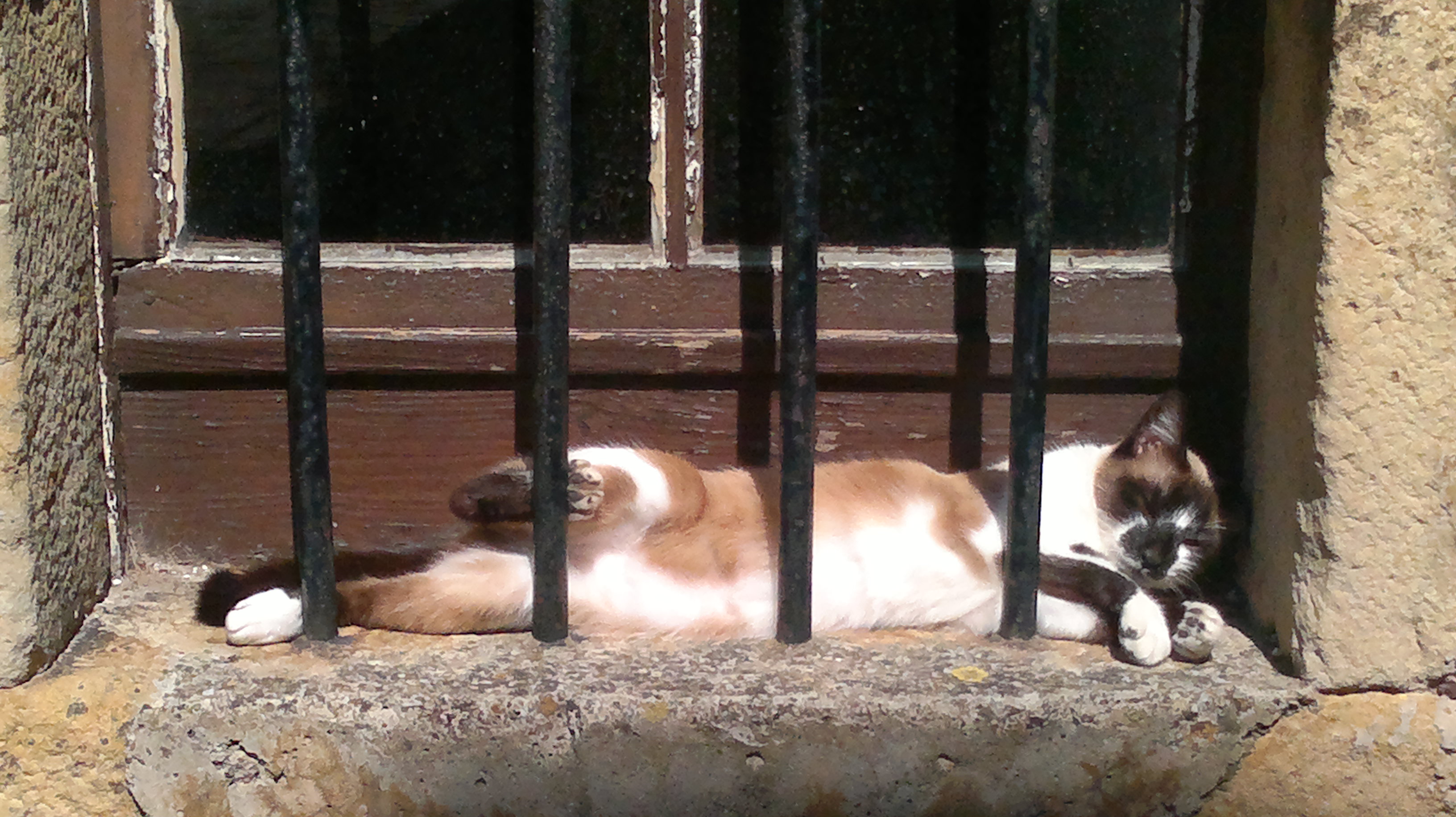Tras unos días de fríos nortes, el otoño ha hecho su impetuosa entrada en el valle y la montaña alavesa, pasando una paleta de ocres y sienas sobre la arboleda y la hojarasca. Después, un veranillo de San Martín acompañado de cálidos vientos del sur ha venido a mitigar los rigores climáticos, creando unas condiciones ideales para viajar en moto.
En esta ocasión escojo Ochandiano, un pueblo que ya ha llamado mi atención en otros viajes y al que se llega por una muy entretenida carretera de curvas medias. La ligera cazadora que venía utilizando durante el verano ya se queda escasa, y tengo que echar mano del tres cuartos. No obstante, aún puedo utilizar el casco jet, cuyo tiempo de uso se está alargando más de lo que creía. Ha sido una buena compra. Y allá voy. Primero, unos aburridos quilómetros de autovía que me sirven, eso sí, para calentar el bicilíndrico en línea de la F800, más bien frío al principio. Algunas rachas fuertes de viento azotan de través los cuatro carriles de la autovía y me empujan hacia el arcén. Luego me desvío por la carretera local, protegida del viento por los árboles, que ya van dejando caer su vestimenta de hojas sobre el asfalto y ponen una cálida nota amarilla y ocre sobre la cinta grisácea y fría. Cojo las curvas, heterogéneas en trazado y radio, en alegre y animada sucesión. Siempre alerta, eso sí, porque a la calzada no le sobra anchura, vienen algunos coches en sentido contrario y un error puede costarme una tonta caída.
Antes de darme cuenta estoy entrando ya en Ochandiano. Tal es, desde el s XII, el verdadero nombre del pueblo, aunque el actual gobierno autonómico lo rebautizó como Otxandio, que es una evolución fonética relativamente reciente y de popularidad desconocida. Etimológicamente, Ochandiano significa el lugar de ochoa handía (gran lobo).
Descabalgo de Rosaura en las traseras de la iglesia y doy comienzo a mi visita. La plaza principal, Nagusia, es de un romanticismo y una armonía singulares, toda en piedra, incluyendo la impresionante tapia del frontón; extensa y despejada, guardada por el elegante torreón de la parroquia de Santa Marina, flanqueada por viejas casas, por el soberbio edificio del ayuntamiento y por un cobertizo columnado, lugar de reunión los días de mal tiempo. Copudos y corpulentos árboles dan fresca sombra a unos bancos de granito que podrían, sin duda, contar cien historias de enamorados y otras tantas de peleas entre cuadrillas. Sólo afea a Nagusia un moderno e innecesario panel luminoso informativo.
En uno de los tablones junto al ayuntamiento leo alguna orgullosa frase sobre el origen y la pureza vascuence de Ochandiano, primera localidad de Vizcaya, entrada a un territorio histórico con fuerte identidad. Nace la villa, dice, en el s XIII a la vera del camino real que unía Castilla con los principales puertos del Cantábrico vascuence, y era la puerta entre las vertientes mediterránea y cantábrica de los montes de Urquiola. Debía ser por aquel entonces no más que una aldea de pastores semi nómadas vascos cuando fue fundada como villa y recibió la carta puebla del entonces Señor de Vizcaya, López Díaz de Haro, con objeto de poblarla y establecer un centro comercial y defensivo como otros muchos en aquella época.
Luego, durante casi toda su historia, Ochandiano perteneció al Señorío de Vizcaya, de modo que, al recaer tal título sobre Juan I de Castilla en 1379, la villa pasó a formar parte de la corona de Castilla y posteriormente la de España. Un caso más en que se pone en evidencia la falta de fundamento para la independencia de un territorio que ni lo ha sido nunca, ni ha tenido antes de ahora conciencia alguna de identidad nacional. En el mejor de los casos, la de haber pertenecido a otra corona tampco vascuence: la de Navarra.
Además de por su plaza, el pueblo me atrae por su trazado en tres calles paralelas norte-sur comunicadas por misteriosos y umbríos pasadizos y cantones, típico de esa época en esta tierra; y también por la armonía y el buen gusto de sus casas, por los recios muros de sus edificios y por ese aire aún algo medieval, tranquilo, de gente amable y sencilla.
Algunas rachas de viento arremolinan las hojas que los árboles han dejado caer. Apenas se ve gente. En el centro de Nagusiahay una fuente de agua fresca y borbotante, con cuatro caños y una imagen de Vulcano, símbolo de las fraguas que supusieron el auge económico de la villa durante la época preindustrial, y consecuencia de las cuales los montes de los alrededores se vieron seriamente deforestados, verificando así el destino de tantísimas sociedades que, por atender sólo a lo inmediato, han forjado (y nunca mejor dicho) su propio declive. Al llegar la mecanización de la industria, y habiendo quedado los montes depauperados, Ochandiano ya no pudo competir y muchos de sus maestros y artesanos se vieron obligados a emigrar. Hubo el pueblo de reconvertirse a la agricultura, con la consiguiente pérdida de riqueza.
A Ochandiano, como es normal en Vasconia, no le faltan atractivos bares y tabernas, sobre todo a lo largo de la calle principal, Uribarrena. Tras haber explorado los varios rincones del pueblo y fotografiado sus primores, entro a una pequeña taberna en la plaza, de nombre Danoena, donde dos viejos hablan en español y apuran el clarete de sus copas. El camarero es otro viejo, parlanchín y amable, al que pido una copa de lo mismo y me explica: ‘se vende y se bebe muy bien, y no es caro.’ ¿Pero es de la tierra?-le pregunto. ‘¡Ah, eso no sé! Catalán creo que es.’ Sí, era un espumoso catalán. Ese hombre y sus clientes-me dije-no parecen estar muy afectados por el típico chovinismo, y tal vez les importe poco la identidad vasca. Al marcharme, me aconseja un restaurante donde se come bien y a buen precio. Me chocó que, al despedirnos, no me dijera agur, sino adiós. Definitivamente ese hombre no se cuidaba mucho de política.
Antes de ir a almorzar, no obstante, recalo en el bar vecino, una herriko-taberna de esas donde, según dicen, recaudan fondos para la causa de ETA. Pero no me importa. No soy tan fanático que eso me impida tomarme un vino. Pido un chacolí con un pincho. Bai, me dice el chaval. Un tipo también agradable, como casi todos en esta tierra. Lleva, eso sí, el uniforme look borroka: una especie de coletilla, pendientes y aspecto jipi. Habla con otros clientes jóvenes en vasco. El local está decorado todo él con motivos independentistas y de apoyo a ETA o a sus presos, que para el caso es lo mismo. El lugar está descuidado, y las moscas revolotean a placer sobre los pinchos. A la hora de pagarle, me dice el precio en español y las gracias en vascuence, más el inevitable agur.
Es curioso -me digo- que sean los jóvenes, que no han vivido represión alguna ni conocido los tiempos de la dictadura, quienes más radicales se muestren. Supongo que será cosa del adoctrinamiento recibido. Al salir del bar veo a tres moras cruzando la plaza, disfrazadas con sus túnicas de colores. Esta región ha atraído a una inusitada invasión morisca, que llena las capitales y llega hasta el villorrio más remoto. Tendría gracia que se islamizara la región antes de que los vascos consigan la independencia que tanto ansían.
Ochandio está, según su propia publicidad, en plena ruta del vino y el pescado, así que al entrar al restaurante no me pienso dos veces las opciones del menú. Sopa de pescado y lubina a la plancha. Me atienden bien, con amabilidad. La comida es buena, pero el vino, de Rioja, habría servido para teñir de granate las aguas de un río.
El café lo tomo en otro bar, al extremo opuesto de la calle. Me atiende una joven guapa y simpatica, que habla en vasco con algún vecino. Me sirve un café muy aromático que tomo sentado a una de las mesas de fuera. El lugar y la atmósfera no tienen nada que envidiarle a los de esos bonitos y cuidados pueblos franceses. Viajar por aquí es un placer.
Un último paseo, unas últimas fotos, y vuelvo a donde tengo la moto aparcada. Me calo casco y guantes, cabalgo sobre Rosaura, arranco y emprendo el camino de regreso, disfrutando el paisaje y las curvas, los colores del otoño y el aroma a tierra mojada.
After a few cold days, fall has hastily arrived to the valley and mountains of Álava, bestowing its palette of ochres and siennas upon the groves and the earth. Then, an Indian summer along with southernly winds is appeasing the climate harshness, bringing fitting conditions for riding a bike.
This time I pick Ochandiano, a borough that had already caught my eye during some other trip. The road leading there is quite entertaining, with an enjoyable series of bends. The light jacket I’ve been using so far for riding is, now, not warm enough, so I catch a three-quarter coat. But I still can use my jet helmet, good enough for this weather. And there I go!
First, a few boring miles on the freeway, good for nothing but warming up my F800’s twin cylinder. A few strong gusts swipe the four-laned road and pushes me to the shoulder. Then, I turn off to a local road, shelterd from the wind by the groves whose falling leaves decorate the grey asphalt with a nice note of yellow and ochre. I take the unpredictable bends in a swift and fun succession, but with due care: the road is not so wide, there is some traffic and a mistake could be fatal.
Before I can realize the time, I’m already entering Ochandiano: such is its real name since XIIth century, though the regional government has changed it into Otxandio, which is but a recent fonetic evolution. Ethymologically, Ochandiano means the place of ochoa handía (big wolf in Basque).
I dismount Rosaura at the church’s back and start scouting the village. Nagusia, its main square has a unique romantic harmony, all stone, spacious and open, watched by the elegant bell tower of Santa Marina church, lined by old houses, by the city hall palace, by the striking stone fronton and by a colonnaded lean-to. Tall stout trees shade a few granite benches that surely might tell us one hundred love stories and factions fights. Only the ugly, modern and unnecessary LED lit information board breaks the beauty of the square.
On one of the boards near the city hall I read a proud sentence about the origin of Ochandiano and its pure Basque character, first borough of Biscay, gate to a historical territory. It was founded along the first half of XIIIth century, along the royal way connecting Castile with the main seaports in the Cantabric, right upon the pass through the Urquiola mountains. Before then, it must have been but a Basque shepherd’s small village, until López Díaz de Haro, Lord of Biscay, granted Ochandiano the privileges with the main goal, as was customary in those times, of populating it and establishing a defensive and commercial centre.
Since then, and during most of it’s history, Ochandiano belonged to the Signiory of Biscay, and therefore to Castile since 1379, when king Juan Ist got the title of Señor de Vizcaya. One more example of the lack of foundations on the part of these land for claiming independence of territories which never had it, nor even the notion of being a nation in themselves.
Besides the main square, I also feel attracted by this village’s street layout, typical in the region: three parallel streets running north-south and connected by misterious, gloomy alleys and passageways; by the harmony and good taste of its houses, by the sturdy walls, and by that almost medieval look, quiet atmosphere and its people’s kindness.
Every now and then a gust whirls vigorously the fallen leaves. There are very few people around. In the middle of the square there is a fountain with four pipes gushing cool fresh water, and sporting the image of Vulcan, who symbolizes the forges thanks to which the borough saw a time of pre-industrial economical splendour, at the expense of a severe deforestation in the surrounding mountains. Such is the doom of so many societies which, caring only about the inmediate future, are the origin of their own downfall. Upon arrival of the industrial mechanization, and lacking more wood for feeding the forges, Ochandiano could not compete, and many of its masters and craftsmen had to migrate. The village went back to agriculture, and therefore got poorer.
Nowadays Ochandiano abounds, like most Basque towns, in nice bars and taverns, most of all along Uribarrena, the main street. So, once I’ve explored this village’s corners and taken some few pictures, I get into a small tavern where two old men, speaking Spanish, finish off their wine glasses. I ask the waiter, another talkative and kind old man, to be served a glass of the same wine. He explains: ‘it’s quite popular this wine, good and not expensive.’ But is it local?–I ask. ¡Oh!, I don’t know about that. I believe it’s from Catalonia.’ This old man and his customers don’t seem to care much about the Basque identity. Upon leaving the bar, he sees me off and points to a restaurant where, he says, I can eat well and affordable.

The city hall, showing only the Basque flag, thus contravening the law, neglected by central government.
Yet, before going for luch, I stop by a neighbouring bar, one of those so-called herriko-tabernas, where the money for the Basque cause and terrorism is collected, or so the story goes. I order a wine and a pincho. Bai, the waiter replies in Basque (means “yes”). He’s a fine dude, like most people here, sporting a rasta look, some piercings and a hippy look. He talks in basque to other youngsters. The whole premises are decorated with independence signs and symbols, supporting the terrorists. Flies freely swarm around the pinchos. When I ask the bill and pay, he tells the price in Spanish and thanks in Basque.
Funny -think I- that the most radicals are the youngsters, who never saw any repression nor knew dictatorship times. I guess it’s a matter of the indictrination they go through. When I go out, I see three moors clad in their colourful robes; obviously no tourists. This region has drawn a striking muslim invasion: cities are crammed-full of moors, and you find them even in the remotest village. This land will be eventually Islamized long before the Basques fulfill the cultural immersion they endeavour.
Ochandio stands right in the middle of a fish and wine route; so, when entering the restaurant, I already have in mind what I’m going to order: fish soup and grilled bass. The staff is kind and serviceable, food is good, but the wine… could have dyed a whole river.
For a coffe I go to yet another bar, in the other end of the street. A young, pretty and very nice waitress tends to me. She also talks in Basque with the locals, while serving me a very aromatic coffe. I drink it outside, sitting at one of the street tables. The place, the temperature and the atmosphere make me feel like in one of those beautiful and tidy French towns. Only cheaper and closer.
A last walk, a few more shots, and I go back where Rosaura is waiting for me. Helmet, gloves, starter, and I take the way back home, enjoying the landscape, the road bends, the autumn colours and the sweet scent of wet earth.

